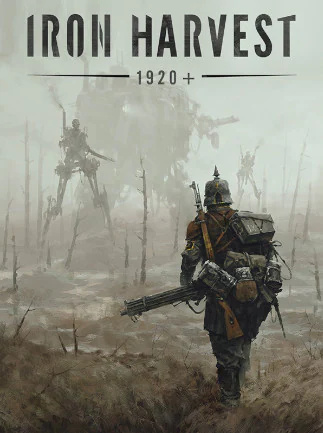

Because of this, any strategic plans hinging on the strength of the mechs often fell flat, and in later playthroughs I ended up focusing on different infantry units instead. Often my mech unit would not be able to get past a simple low wooden balustrade or a little brick wall, and it would take them forever to get from one point of the battlefield to another. While mechs look great and seem powerful (they generally have a higher HP and DPS rate), I found them clunky to control.

While there’s a large variety of units and many of them are useful, some feel more like a hindrance than an asset. In addition, I also felt like the game gave me no alternative if I had been relying on my units to react quickly enough in the heat of battle, I wouldn’t have stood a chance in combat. While I enjoyed strategising and planning in this way, I’m conscious this won’t be everyone’s cup of tea, especially when it comes to players who are new to the genre. When you finally get to a point where you’ve got a plethora of units running around the map and mechs stomping along in the background, it’s an incredibly satisfying sight. Through its single-player campaign, you’ll start your first several missions with a few infantry units, before gradually controlling more powerful and complex ones. The units and landscapes look stunning, the battlefield animations look and sound great, and the variety of units will keep you on your toes in battle. Visually, Iron Harvest does a wonderful job of creating an engaging world for players to lose themselves in. The result is impressive and conveys how powerful and intimidating mechs are supposed to feel on the battlefield.

The mechs are introduced in a suitably impressive way: for the game’s opening trailer, the developers used archival war footage and added mechs in the background. This, coupled with the game’s mech units – giant tank-like robots – really brought Iron Harvest’s world to life for me. Olga Romanov of the Rusviet faction, for example, has a pet tiger that she can ride into battle, while Anna Kos of Polania has a killer sniper and a bear that can maul hordes of enemies. While the voice acting is naff here and there, and some of the story beats feel generic, faction hero characters feel suitably badass for the world they’re in. Without wanting to spoil anything, things rapidly become more interesting from that point on. After Anna’s brother Janek joins the Polanian forces at the front, Anna has to save her hometown from Rusviet invasion.

Sandwiched between the Saxony Empire and Rusviet, Polania is fighting two territory-hungry nations to survive and stay independent. The most interesting part in the story campaign for me was definitely Anna Kos’s, the Polanian resistance fighter who you control at the start of a playthrough. As you progress through the story campaign, you’ll get to play as different factions’ hero characters while learning more about each faction’s backstory. Each faction comes with unique perks and quirks, as well as characters that function like hero units on the battlefield. The game features three different factions: Polania, Rusviet, and the Saxony Empire. Iron Harvest’s story is mostly told through its lengthy single-player campaign, which consists of about twenty missions. The fact that Iron Harvest is set in an already firmly established universe made for an appealing world in my eyes, and it was clear that the developers had a distinct vision of what the world should look and sound like. Popular board game Scythe is also set in this universe and, while the main stories in Scythe and Iron Harvest aren’t directly related, the choice of universe does make for a gorgeous aesthetic that easily draws players in. Iron Harvest is set in the alternate reality of 1920+, a universe inspired by the art of Jakub Rozalski where Russia’s tsar and Rasputin still reign supreme. Based on these results, Iron Harvest takes its gameplay cues from classic strategy games like Company of Heroes, Dawn of War, Age of Empires, and more. The survey results are a fascinating read. Driven by the desire to innovate and make a boundary-pushing RTS game for the biggest fans of the genre, the King ART game team surveyed over fifteen thousand players about what they would most like to see in a real-time strategy title. Funded through Kickstarter in late 2018, the game has a dedicated team of developers behind it, many of whom have worked on games like The Witcher, Scythe, and Viticulture. The game features a single-player campaign mode, a multiplayer mode, a skirmish mode, and also has several scenario challenges. Iron Harvest 1920+ is an RTS game developed by KING Art games and published by Deep Silver.


 0 kommentar(er)
0 kommentar(er)
